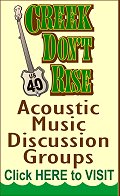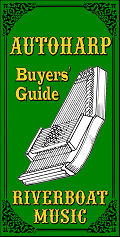
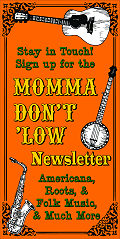
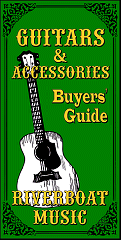
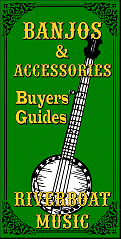
|
Autoharp Publications
Countless books on playing the autoharp have been published. I'll list a few that people claim to find helpful, but I have to confess there is some overlap, so listing them all would just be confusing. And the YouTube videos listed in our "Playing Autoharp Overview" are also pretty helpful.
A few good professional video series have also been produced for sale. Most of them have value, and I'll list those as well.
I'll also review some out-of-stock books because some people will find that they're worth tracking down.
Finally there are a number of books that focus on specific kinds of songs, including holiday, Celtic, etc. Those don't overlap as much as the instruction books. I've only skimmed a few, but I'll list the ones that look promising.
About Amazon Links - I don't care where you buy any of the products on this page. If you can get them through your local music store, that would be best of all. But we get a small remuneration if you click on one of our Amazon links and buy something on that visit.
Right now, that pays about 1% of our expenses keeping up this site, so I hope you don't find us entirely mercenary. :-)
The autoharp publications that we think are most likely to be helpul to you are listed below. There are at least another dozen books that you might find helpful if you come across them. Practicing and learning a lot of songs will do you the most good, whatever books and videos you start out with.
 | The Autoharp Owner's Manual,
by Mary Lou Orthey | This is a "classic" publication by a woman who, with her husband George Orthey, helped define modern autoharp playing. The book includes information on playing, reconfiguration, construction, and much, much more. | Check Stock
on Amazon
 |
 | Complete Method for Autoharp or Chromaharp,
by Meg Peterson | Meg started writing about autoharps when there were few worthwhile instruction books available, and she kept up with advances in autoharp design and playing for decades. This book is a compilation of the information she considered most useful
In addition to instruction and practice songs, this book includes a reference section included for those who wish to learn about music notation, theory, harmony, transposition, and chord substitution.. Also included is information on tuning, changing strings, and altering chord position on the instrument.
I'm told there's a link to an online audio resource that includes demonstrations of the techniques, plus practice songs to play along with. My edition didn't have that, so I'm going on what the publisher says. | Check Stock
on Amazon
 |
 | Your First Autoharp,
by Paul D. Race | This downloadable booklet addresses most of the questions that most newbies have when starting out. It's our attempt to It's our attempt to help you get a "jump start" without getting lost in content that doesn't really apply to you now, and may never apply.
Includes tips, tricks, tweaks, learning aids, practice tunes and much more.
| Learn More |
 | You Can Teach Yourself Autoharp,
by Meg Peterson | This is an updated version based on Meg's previous writing and research.
Like the previous version, it includes dozens of practice tunes, and a link to online resources. | Check Stock
on Amazon
 |
 | Celtic Autoharp,
by Karen Mueller | This includes 35 Celtic tunes arranged for autoharp. It also includes an audio download so you can hear and practice with the tunes | Check Stock
on Amazon
 |
 | Songs of Christmas for Autoharp ,
by Meg Peterson and Dan Fox | This includes 31 Christmas songs from all over the world. Most can be played on a 15-chord autoharp, though a few require a 21-chorder. (The promo also mentions a 27-chorder, but I'm not sure you would need one for that. Only one 27-chorder has ever been produced - the Chromaharp Caroler - and it's real hard to find in playable condition. | Check Stock
on Amazon
 |
Video Instruction
Yes, we list several great YouTube videos that will help you get started in our "Playing Autoharp Overview." But theres something to be said for a curated set that takes you through increasingly advanced skill sets.
Most of the videos we've come across are out of print. We provide an Amazon link, because they sometimes link to third-party stores that have them in stock. Alternatively, of course, you can simply google the product name and author.
The autoharp video instruction sets that we think are most likely to be helpul to you are listed below.
 | Bryan Bowers' Autoharp Techniques - Developing Your Skills,
by Bryan Bowers | Autoharp virtuoso provides step-by-step instructions for improving your skills. This is the most professionally-produced video of its sort. | Check Stock
on Amazon
 |
 | Learn To Play Autoharp
,
by John Sebastian | John Sebastian, one-time songwriter and lead singer of Lovin' Spoonful may be the only autoharp player to have written multiple top-10 rock-and-roll hits. Folks who only know John from the Spoonful (and maybe "Welcome Back") don't realize how steeped he has always been in Folk and Roots traditions.
In this autoharp lesson DVD, John starts at the very beginning, and moves on from simple flatpicking to fingerpicking styles. | Check Stock
on Amazon
 |
 | Melodic Autoharp
,
by Carol Stober | Sorry, I don't have this one, but it looks interesting. The Texas Music Supply company says: "Using traditional country songs, autoharp master, Carol Stober takes you step by step from basic accompaniment patterns to advanced melodic solos. Includes ear training tips for the play-by-ear student as well as tablature and notes for sight readers." | Check Stock
on the Texas
Music Supply
site. |
 | Beginning Autoharp
,
by Evo Bluestein | Evo is well-known in autoharp circles, both because of his musicianship, and also because he invented the "Sparrowharp," a full-featured autoharp that is a little bit narrower, for the benefit of people with short arms or joint issues. For his videos, Evo studied how the autoharp was being used by "String-band," "Mountain," and "Appalachian" players, so he could present the most traditional ways of playing for Bluegrass and related genres. This DVD is very hard to find, but at the moment the video is available as a download from Evo's web site. | Google "Bluestein Autoharp DVD"
or buy the Video Download on EvoBluestein.com |
 | Beginning Autoharp
,
by Evo Bluestein | Evo expands on the foundation laid in his "Beginning Autoharp" video, showing additional techniques from the masters of "mountain" autoharp.
The DVD is currently available a few places, including McSpadden Dulcimers and from Evo's web site. It's also available as a digital download | Buy the DVD from EvoBluestein.com
or buy the Video Download on EvoBluestein.com |
Out-of-Print Reference Books
Sadly, two books that I find useful, both of which include information that isn't available anywhere else are out of print, and the publisher has no intention of reissuing them. Not only are they hard to find, but when you do find them, you may pay a premium.
I include links to the Amazon listing, because sometimes they link to third-party sellers who have them in stock. But you'll probably have more luck if you just google the book title.
 The Autoharp Book The Autoharp Book
by Becky Blackley
Starting in 1980, autoharp player Becky Blackley published an autoharp magazine (The Autoharpoholic), which eventually covered countless aspects of autoharp manufacturing, playing, maintaining, repairing, and building.
Wanting to answer readers' questions about the history of the autoharp, and - as often as not - the history of the instruments they owned, Blackley received permission from Oscar Schmidt to research their archives.
The result is the most comprehensive book on the history of the autoharp that can ever be written, since OS has changed hands twice since, and those materials are almost certainly unavailable. Blackley's book includes pictures and details on almost every Zimmerman, Dolge, Phonoharp, and Oscar Schmidt autoharp ever made. It also includes tips on playing and tablature.
The book hasn't been revised since 1983, and is long out of print, so recent developments are left out. But most of the most interesting history of the autoharp happened before that, anyway.
Not every autoharp player needs this book (thank goodness, since it's long out of print). But I'm very glad to have it in my library. Check Listing on Amazon 
(Amazon sometimes links to third-party sellers with used copies in stock.)
 Going Diatonic Going Diatonic
by George Foss
George Foss was a music educator who taught and played all kinds of music. When he became interested in the autoharp, he saw a great deal of untapped potential in the thing.
He was especially fascinated by the possibility of doubling strings (somewhat like a 12-string guitar), so more strings would sound at the same time. You would do this by choosing one or two keys to focus on, and "sacrificing" notes you wouldn't need for those keys. For example, if you wanted to play only in G, you might tune Eb down to D, Bb, down to A, F down to E, C# down to C, and maybe even G# down to G. Then you cut extra gaps in your remaining chord bars so the doubled notes sound.
In the above example, most chords you would play in the key of G would have two doubled notes. Of course, this drastically reduced the number of keys you could play in, but it also made the instrument louder and richer, reduced the "thunk" of playing muted strings, and made playing melodies easier.
It sounds simple when you put it the way I have, but George researched almost every possible aspect of this sort of conversion, dealing with the science of vibrations and acoustics, alternate tunings, and more. He provided an exceptional number of details and choices for his readers' consideration.
George published multiple editions of this book, all created on his typewriter and usually bound with punched holes and plastic binding. It has been out of print for decades. But if you really want to dig into the theory of why "diatonic" autoharps work, you'd be advised to track down a copy.
Check Listing on Amazon 
(Amazon sometimes links to third-party sellers with used copies in stock.)
Conclusion
Once again, the internet videos we list near the bottom of our "Playing Autoharp Overview" page can give you a good start, but sometimes it helps to have a book you can make notes in and take to the beach. Or a DVD you can sit back and watch over and over with your 'harp on your shoulder.
However you learn to play, you're bound to enjoy yourself, and hopefully find ways to continually improve.
 Whatever else you get out of our pages, I hope you come away with some great ideas for "sharing the joy." Whatever else you get out of our pages, I hope you come away with some great ideas for "sharing the joy."
And please stay in touch!
- Paul Race









All material, illustrations, and content of this web site is copyrighted ? 2001, 2002, 2003, 2004, 2005, 2006,
2007, 2008, 2009, 2010, 2011, 2012, 2013, 2014, 2015, 2016, 2017, 2018, 2019, 2020, 2021, 2022, 2023, 2024 by Paul D. Race. All rights reserved.
HarpersGuild.com is a participant in the Amazon Services LLC Associates Program, an affiliate advertising
program designed to provide a means for sites to earn advertising fees by advertising and linking to Amazon.com.
For questions, comments, suggestions, trouble reports, etc. about this page or this site, please
contact us.
| Visit related pages and affiliated sites: |
| - Music - |

|
 |
 |

|

|

|

|

|

|

|

|

|

|

|

|

|

|

|
| - Trains and Hobbies - |

|

|

|  |
 |

|
| - Christmas Memories and Collectibles - |
 |

|
 |

|
 |

|
| - Family Activities and Crafts - |
 |

|

|

|

|

|
|  |





